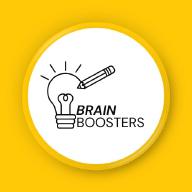What’s covered (at a glance)#
KS3 builds creative confidence and technical skill. Pupils learn to:
- Develop ideas and creativity, becoming more proficient with materials and techniques (drawing, painting, sculpture and more). (GOV.UK)
- Record observations in sketchbooks/journals as a basis for exploring ideas. (GOV.UK)
- Analyse and evaluate their own and others’ work to strengthen visual impact. (GOV.UK)
- Know about artists, craft makers, designers and architecture, including major periods and movements from ancient to modern. (GOV.UK)
Common sticky spots#
- Perfectionism vs. experimentation: fear of “getting it wrong” can block creative risk-taking.
- Observation & proportion: translating what they see onto the page (scale, alignment, perspective).
- Composition & colour decisions: planning a balanced piece and mixing colours purposefully.
- Art vocabulary & critique: describing choices and giving evidence-based feedback with confidence.
- Sustained projects: turning sketchbook exploration into a finished, coherent piece.
How I support your child#
- Calm, low-pressure studio feel: process over perfection—small wins every lesson.
- Step-by-step teaching: I model techniques (line, tone, proportion, composition), then guide practice before independent work.
- Sketchbook routines: regular observational drawing, thumbnails, and annotations to develop ideas that lead to stronger outcomes.
- Wider knowledge, stronger voice: short, engaging look-ins to artists, designers and architects to inspire style choices and cultural context. (GOV.UK)
- Clear feedback for growth: kind, specific critiques and simple targets; brief parent updates and optional home tasks to lock in progress.
